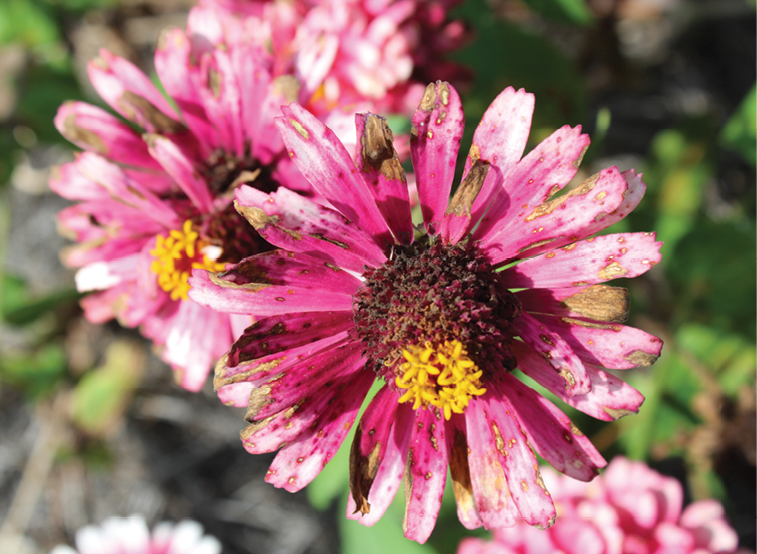
Much of the United States is in the heart of winter right now, but it’s important that growers don’t get too distracted by the current weather and make sure they’re still looking ahead to spring. It’s always important to prepare for the next season, and a crucial aspect of that is keeping plants healthy and safe from pests and diseases. The best way to do this? Keep pathogens out of the greenhouse. “If you don’t have a pathogen introduced into your greenhouse, you can’t have disease,” says Nicole Gauthier, extension associate professor and extension specialist in plant pathology at the University of Kentucky.
Prevention is the greatest cure
There are several steps growers can take to combat pests and diseases in the greenhouse, but one reigns supreme, says Gauthier. “Number one is always prevention,” Gauthier says. “So you’re going to start with a clean greenhouse, clean surfaces, clean everything and bring in clean plant material and clean media.” If everything in the greenhouse is clean and everything that’s brought in is clean, Gauthier says, then diseases shouldn’t develop on the plants.
“Sanitation keeps you from bringing [pests and diseases] in the greenhouse in the first place,” she says, “but sanitation will also protect you if you do have an outbreak or an isolated incident of a disease. It helps keep you from spreading it.”
Unfortunately, some growers can overlook the importance of sanitizing the greenhouse ahead of time, as they get too wrapped up in identifying plant disease and treating them after the infestation begins, Gauthier explains.
To ensure all plant material and growing media is clean, she recommends growers visually inspect all shipments with hand lenses before they accept them and bring them into the greenhouse. For additional precautions, growers can also send samples to a lab. If something is contaminated, growers can quarantine the plant material, send it back to the supplier, or, if necessary, destroy it.
“Even if you’re desperate for a shipment to come in, it’s better to be able to reject it as opposed to introducing a pathogen or a pest into your greenhouse operation,” Gauthier explains.
Mary Hausbeck, extension specialist and professor at Michigan State University, also emphasizes sanitation practices for growers wanting to protect their plants in the spring.
“When I’m providing extension presentations, people are looking for new technology, something exciting, something shiny, but I’m in front of them saying, ‘Guys, you’ve got to sanitize and you have to do it really well,’” says Hausbeck.
Unfortunately, sanitizing has some challenges involved. According to Hausbeck, one of the biggest obstacles is when a grower uses floor covers and growing mats, as they can be difficult to sanitize. Even though it can be expensive, Hausbeck says that it’s often best to replace any growing mats that come in contact with contaminated material.
But how does a grower know when they’ve sanitized a surface enough? “The rule of thumb is something should be clean to your eye,” Hausbeck says. After any visible dirt and contaminants are taken of, then growers can use a disinfectant on the surface.
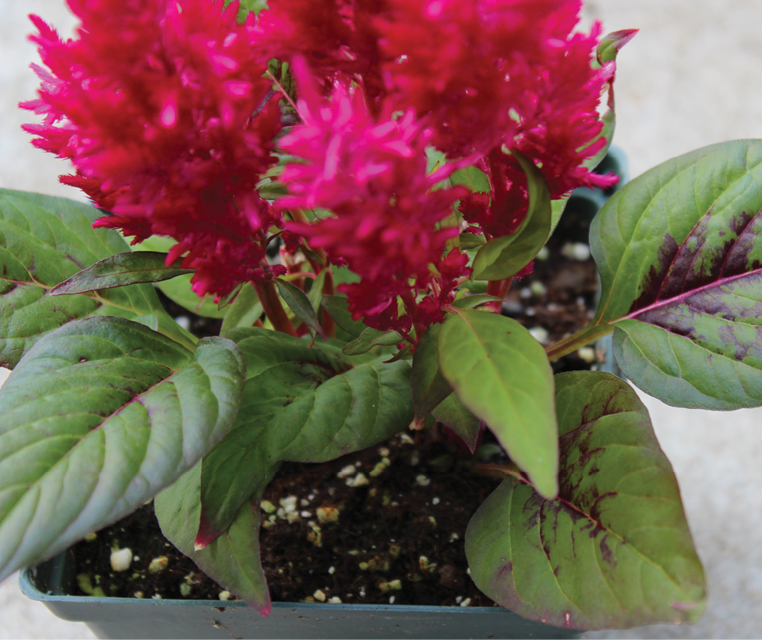
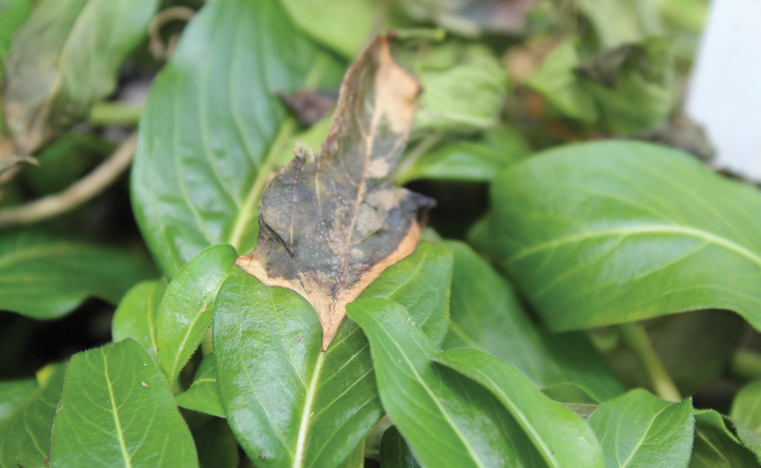
Botrytis
One disease issue that’s becoming more of a problem to plants is botrytis. According to Hausbeck, growers should be on the lookout for it this spring.
So what makes botrytis so dangerous? It’s especially resistant to fungicides and has a high reproductive capacity, so it “reproduces like rabbits,” Hausbeck says.
“We are seeing fungicide resistance in a way that we were not fully aware of in the past,” Hausbeck explains. “And it might be the reason why disease management has been a struggle for growers.”
Hausbeck stresses that while many of these fungicides that botrytis has grown resistant to are older, and some of the new ones are working well, it’s still important for growers to alternate their fungicides.
“Given the high amount of resistance that we’re seeing, every application should be a fungicide of a different FRAC code,” she says.
While using fungicides is important for combating botrytis and other fungi in the greenhouse, Hausbeck advises against being wholly reliant on fungicides alone. Instead, it’s better to opt for an integrated program that includes “environmental parameters that can be very helpful in limiting botrytis, such as keeping the humidity down, keeping leaves dry and using good air movement,” Hausbeck says. “Those are all practices that growers can use in combination with fungicide applications.”
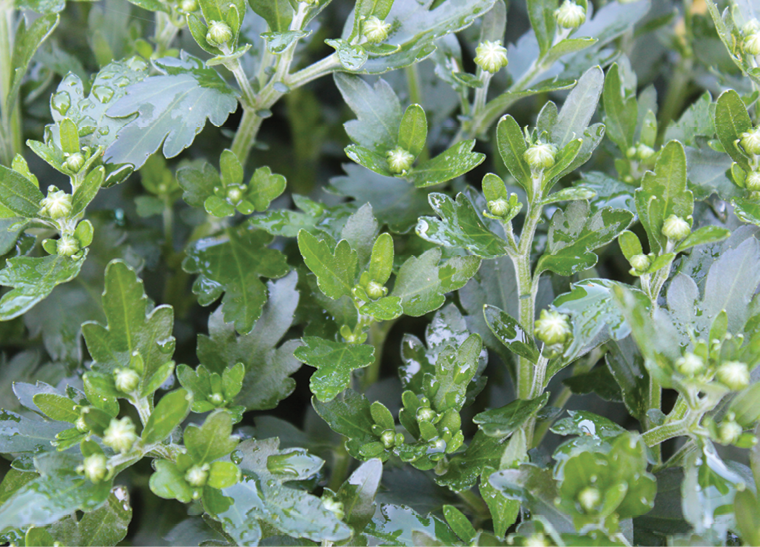
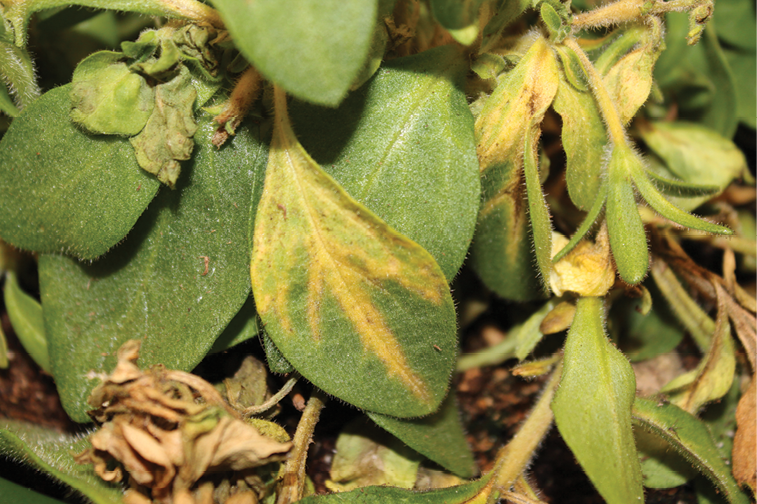
Prepare for spring
When preparing for spring, Hausbeck advises growers to reflect on what happened the previous spring, as it’s likely to be indicative of what will happen this spring.
“I urge them, first of all, to recap what happened last year as far as disease control,” she says. “What were they happy with? What was a struggle for them? Then they can see what adjustments they can make.” If there was a problem last year, that same problem will likely come up again, so growers need to be ready to deal with it again, potentially altering their strategy based on what worked and didn’t work last year.
While it can be difficult to find time to plan for the spring, it’s crucial that growers take whatever time possible to sit down and prepare for the upcoming season. “During the [winter] season, it’s so hard to have any time, but if they just have a moment, to look ahead to think about where they saw more issues and where they might want to make adjustments,” Hausbeck says.
For more education
When growers are looking for educational information about plant pathology, both Gauthier and Hausbeck recommend consulting universities and professors, which share lots of their research findings online for growers to access.
Additionally, Hausbeck says it’s important for growers and researchers to remain in dialogue with one other. When there is communication between the two parties, it’s easier to solve problems.
“We’re always interested in hearing what their experiences are and where they’re struggling,” she says. “We are here to help, so don’t hesitate to reach out.”
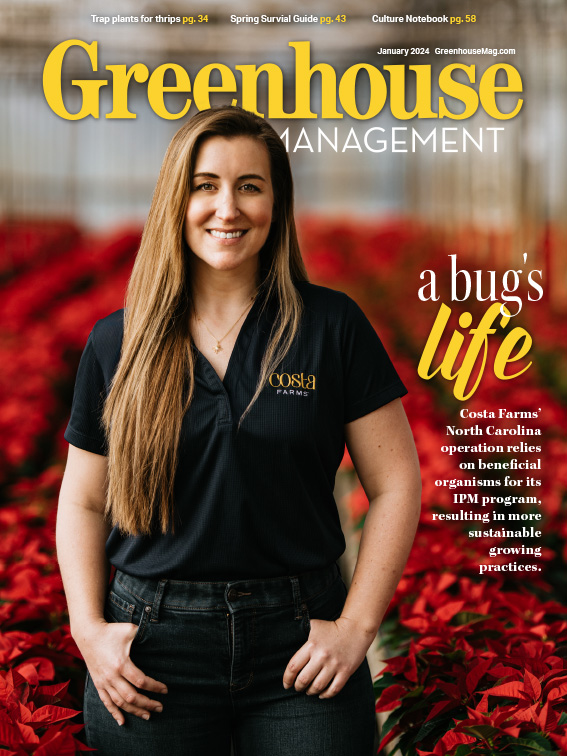
Explore the January 2024 Issue
Check out more from this issue and find your next story to read.
Latest from Greenhouse Management
- SaniDate WTO receives EPA registration to control foodborne bacterial pathogens in irrigation water
- Peter Orum, founder of Midwest Groundcovers, passes away at 82
- Pillars of PGR success
- Measuring up
- Star Roses and Plants launches redesigned website
- Hold the line!
- Star Roses and Plants wins awards from 2025 American Garden Rose Selections testing program
- Stay the course





